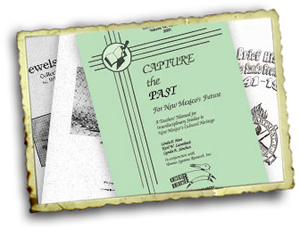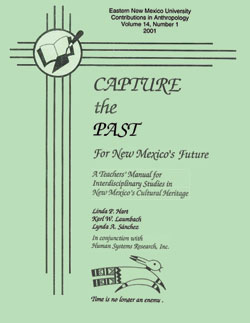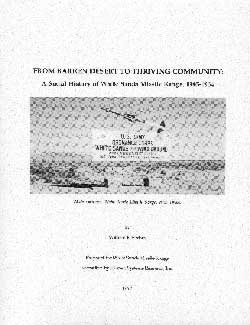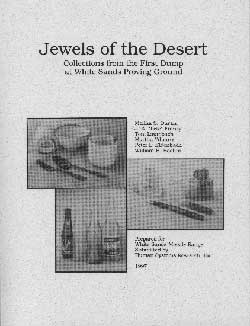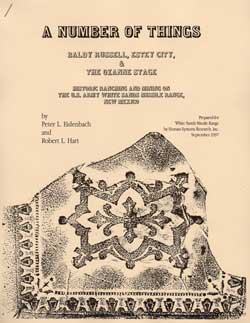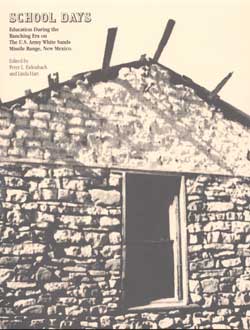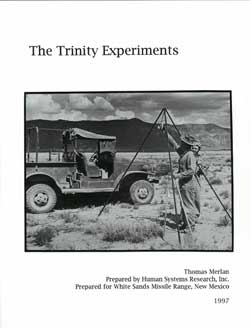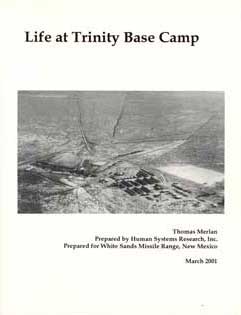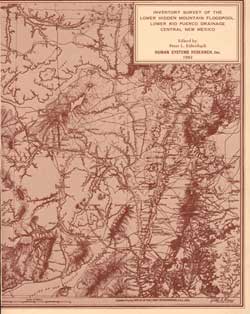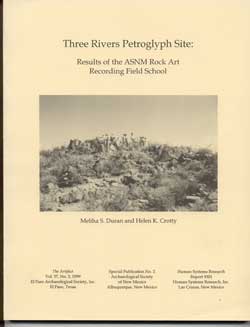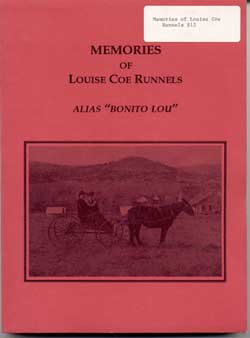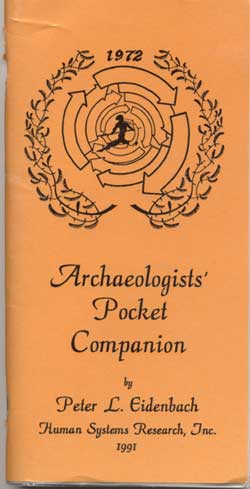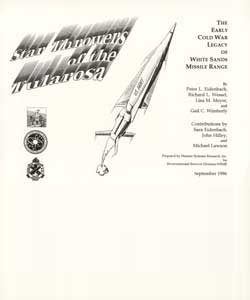Capture the Past: A Manual for Interdisciplinary Studies in New Mexico’s Cultural Heritage
by Linda P. Hart, Karl W. Laumbach and Lynda A. Sanchez
©2001 455 pages $35.00
As we try to “capture the past” for our students, we suddenly realize that the past, both historic and prehistoric, has the power to deeply move us in profound ways. When this happens, it is often because a teacher or some other special individual has shown us, or imprinted upon our hearts, a sense of excitement and awe.
Creativity and imagination can blossom in your classroom as you develop exciting lesson plans that will generate respect and interest in your students. Archaeology is a magic word; it encompasses many areas of study, from scientific theory, research, and interpretation, to art, social studies, language arts, math, personal relationships, and cooperative, hands-on learning.
Read Full SummaryFrom Barren Desert to Thriving Community: A Social History of White Sands Missile Range, 1945-1954
by William B. Boehm ©1997 80 pages $15.00
In late August 1994, a buried historic dump was discovered during the construction of a new commissary building on White Sands Missile Range. Artifacts exposed in the back dirt piles and trench walls helped date the dump to the mid-1940s. The artifacts provided limited information about the people who lived and worked at White Sands Proving Ground, now known as White Sands Missile Range. The discovery of the dump prompted this study of the early years of White Sands Proving Ground. Written for the general audience, the history is based on historic photographs, newspaper accounts, administrative records, oral-history interviews, and the artifacts from the dump.
Read Full SummaryJewels of the Desert: Collections from the First Dump at White Sands Proving Ground
by Meliha S. Duran, J.K. “Pete” Finney, Toni Laumbach, Martha Yduarte, Peter L. Eidenbach, and William B.Boehm ©1997 133 pages $15.00
Jewels of the Desert is one of the first studies of material culture of a Cold War military installation. In 1994, during the construction of a new commissary building at White Sands Missile Range, a previously unknown dump was encountered. The artifacts from this dump, possibly the earliest on White Sands Proving Ground (now known as White Sands Missile Range), provide us with insight into the daily lives of the soldiers and scientists working on the V-2 missile program. Many of the artifacts relate to the personal lives of these men, stationed in temporary quarters in the desert of southern New Mexico. Dates on various bottles indicate the dump was in use from July 1945 to 1947.
Read Full SummaryA Number of Things: Baldy Russell, Estey City, and the Ozanne Stage: Historic Ranching and Mining on the U.S. Army White Sands Missile Range, New Mexico
by Peter L. Eidenbach and Robert L. Hart ©1997 162 pages Out of Stock
A Number of Things results from continuing studies by Human Systems Research, Inc., on the late nineteenth century history of the northern Jornada del Muerto, Tularosa Basin, and Oscura Mountains of White Sands Missile Range, New Mexico.
This forbidding landscape was virtually uninhabited in the early 1890s when Bill Mitchell, alias Henry “Baldy” Russell, developed a series of hand-dug wells, establishing the first ranching homesteads in the area. At about the same time, miners began to explore the area, mail and stagecoach service connected the Rio Grande with the isolated settlements of the Sacramento and Sierra Blanca Mountains, and the brief cattle boom of the 1880s retreated to the grassy plains along the Rio Grande.
School Days: Education During the Ranching Era on the U.S. Army White Sands Missile Range, New Mexico
edited by Peter L Eidenbach and Linda Hart ©1997 87 pages $15.00
School Days is a set of recollections, stories, and photographs from ranching families who homesteaded New Mexico’s last frontier – the barren deserts and rugged mountains of the Tularosa Basin and the Jornada del Muerto – during the late nineteenth and early twentieth centuries. White Sands Missile Range is engaged in the recording of the rural homesteads, isolated windmills, Angora goat sheds, and other physical remains of the homesteading era that dot their landscape. Recording the architecture and archaeology helped preserve history but did little to illuminate it. To meet the need for additional information, the Department of Defense Legacy Resource Management Program provided funding for an oral-history project in which members of the families who homesteaded land that now lies on White Sands Missile Range were interviewed about their ranching experiences.
Read Full SummaryHomes on the Range: Oral Recollections of Early Ranch Life on the U.S. Army WSMR, New Mexico
edited by Peter L Eidenbach and Beth Morgan ©1994 111 pages $15.00
Homes on the Range is a set of recollections, stories, and photographs from ranching families who homesteaded New Mexico’s last frontier – the barren deserts and rugged mountains of the Tularosa Basin and the Jornada del Muerto – during the late nineteenth and early twentieth centuries. White Sands Missile Range is engaged in the recording of the rural homesteads, isolated windmills, Angora goat sheds, and other physical remains of the homesteading era that dot their landscape. Recording the architecture and archaeology helped preserve history but did little to illuminate it. To meet the need for additional information, the Department of Defense Legacy Resource Management Program provided funding for an oral-history project in which members of the families who homesteaded land that now lies on White Sands Missile Range were interviewed about their ranching experiences.
Read Full SummaryThe Trinity Experiments
by Thomas Merlan ©1997 101 pages $15.00
On July 16, 1945, at 5:29:45 a.m. Mountain War Time, the wold entered the Nuclear Age with the successful detonation of the first atomic bomb at Trinity Site in New Mexico. The Trinity Experiments is the first study of the actual experiments associated with evaluating the effects of the explosion. The study was very timely because, during the final year of this study, several scientists associated with the Manhattan Project and nuclear physics passed away.
Read Full SummaryTrinity at 50
by Morgan Rieder and Michael Lawson ©1995 101 pages Out of Print: Contact WSMR Museum at (505) 678-8824
On July 16, 1945, the world entered the Nuclear Age with the successful detonation of the first atomic bomb at Trinity Site in New Mexico. The nuclear test represented the culmination of an unprecedented collaboration between scientists and the military, forged by the nation’s defense needs arising from World War II. Yet that event had a very humble beginning in an undeveloped, virtually abandoned, isolated ranching area in the Chihuahuan Desert, miles from the nearest town.
Read Full SummaryLife at Trinity Base Camp
by Thomas Merlan ©2001 142 pages $15.00
A very remote and isolated location in central New Mexico was selected for the Trinity Test site. The soldiers assigned to the Trinity Test site did not know their final destination when they received their travelorders to New Mexico. With a few rare exceptions, the soldiers and other personnel who set up the experiment did not know the purpose of their work until the actual explosion took place. To maintain this high level of secrecy, a base camp, the headquarters of the McDonald Brothers Ranch, was established a few miles southwest of Ground Zero. While the soldiers and scientists developed the necessary infrastructure for the test, Trinity Base Camp was their home. Because of the high level of security, the soldiers never left Base Camp during the seven months prior to the Trinity event. Baseball, poker, and playing polo on horses from the military police detachment helped alleviate the boredom.
Read Full SummaryInventory Survey of the Lower Hidden Mountain Floodpool, Lower Rio Puerco Drainage, Central NM
Edited by Peter L. Eidenbach With Contributions by Peter L. Eidenbach, Richard C. Chapman, A.H. Warren, Cye Gossett, Bill Gossett, D.W. Love, J.W. Hawley, and J.D. Young
©1982 590 pages $25.00
HSR conducted an intensive inventory archaeological survey of cultural resources, within 10,360 acres or approximately 16.2 square miles, potentially affected by construction of the Lower Hidden Mountain Dam, Socorro and Valencia Counties, New Mexico. The status of lands includes patented, private lands, New Mexico State Trust lands, and public domain.
Read Full SummaryThree Rivers Petroglyph Site: Results of the Rock Art Recording Field School
By Meliha S. Duran and Helen K. Crotty ©1994 134 pages $12.00
The Rock Art Recording Field School of the Archaeological Society of New Mexico worked at the Three Rivers Petroglyph Site in Otero County from 1987 through 1992. The Three Rivers Petroglyph Site contains over 21,000 rock-art designs that are mostly contemporaneous with the Jornada Mogollon (A.D. 400-1450) culture of south-central New Mexico. This six year effort has provided 100 percent documentation of the elements within the 0.22 square mile site on Bureau of Land Management and State of New Mexico land.
Read Full SummaryFourth Jornada Mogollon Conference (Oct. 1985) Collected Papers
edited by Meliha S. Duran and Karl W. Laumbach
©1985 254 pages $25.00
The 1985 Jornada Mogollon Conference was held in Tularosa, New Mexico, in October 1985. Sponsored by Human Systems Research, the conference served as a forum for a symposium on southeastern New Mexico. Those papers were edited by Susana R. and Paul Katz and were published by the Bureau of Reclamation, Pecos River Projects Office, Carlsbad, under the title Advances in Middle Pecos Archaeology; Proceedings of a Symposium Held at the Fourth Jornada Conference. The remainder of the presented papers cover a broad variety of topics pertaining to the prehistory of south-central New Mexico.
Read Full SummaryMemories of Louise Coe Runnels Alias “Bonita Lou”
by Louise Coe Runnels ©1997 154 pages Out of Print
Louise Coe Runnels was born on August 5, 1915, at home in Eagle Creek, Lincoln County, New Mexico. These memoirs and stories are recollections of her life up until the year 1994. The original manuscript was published by Texas Tech University in Lubbock. When Louise attended an autograph party at HSR’s Tularosa lab housed in the old Tularosa Women’s Club, HSR had just finished Homes on the Range, a book about the pioneer ranching families in the San Andres Mountains. Louise asked if HSR would help her publish a second edition of her book.
Read Full SummaryArchaeologists’ Pocket Companion
Peter L. Eidenbach ©1988 76 pages $8.00
This handy, pocket-sized guide is a compendium of mathematical, statistical, and cartographic tables, formulae, conversion factors, and symbols commonly consulted during archeological survey. It has a laminated cover to stand up to heavy use.
Read Full SummaryStar Throwers of the Tularosa: The Early Cold War Legacy of White Sands Missile Range
by Peter L. Eidenbach, Richard L. Wessel, Lisa M. Meyer, and Gail C. Wimberly ©1996 235 pages Out of Print: Contact WSMR Museum at (505) 678-8824
Star Throwers of the Tularosa resulted from an inventory of Cold War era properties on White Sands Missile Range, as part of a Department of Defense Legacy Resource Management Program demonstration project. The properties investigated, constructed between 1942 and 1964, represent elements of an installation type essential to the Cold War historic theme at the national level of importance. They are diverse in structure and represent a range in function from launch and instrumentation facilities to barracks, laboratories, and missile-assembly buildings to administration buildings, and Army and Navy to NASA facilities.
Read Full Summary
